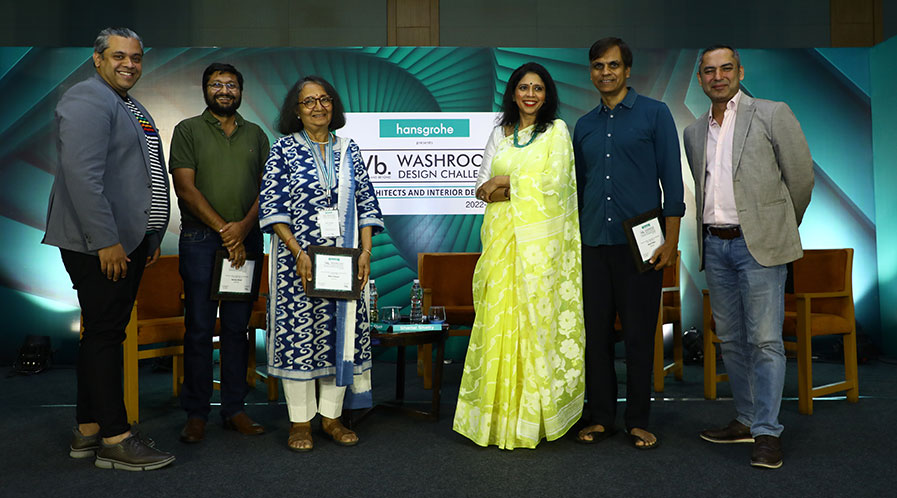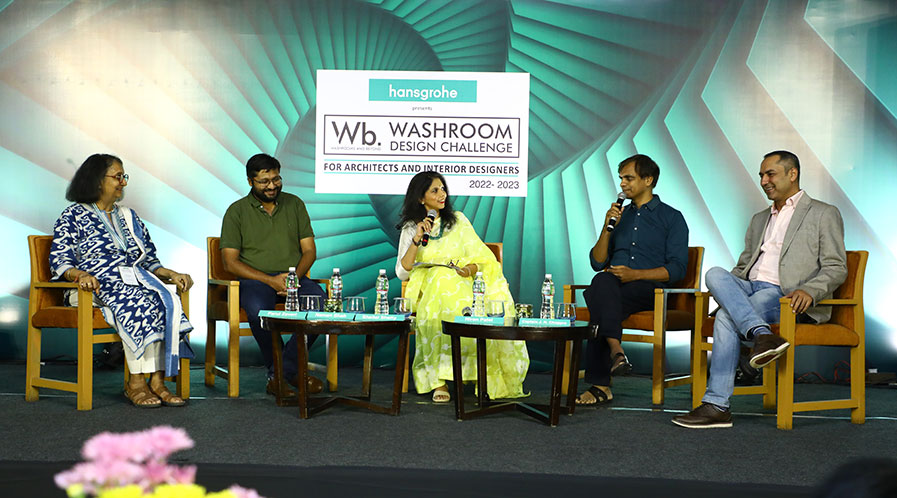Can Luxury Be Responsible?
The panellists discussed ways how luxury can be responsible and what will it take to make responsible luxury a widespread phenomenon
Luxury is often associated with opulence, exclusivity, grandeur and providing the ultimate experience. “This often means inclusive of expensive materials and high-tech fixtures. This also results in over utilisation of precious resources like water and energy. Can luxury be attained with judicial use of resources while not compromising on the functionality or the experience,” asks Sheital Shetty, Editor & Publisher, Washrooms and Beyond.
Responding to that query, Capt. J. N. Choppra, CEO, Aarman Infrastructure says, “Responsible luxury doesn’t sound like an oxymoron because, for different social fabrics, there are different aspects of luxury. Sometimes, when we go into the pure definition of luxury, it is supposed to be something that is unaffordable or expensive. Can it be made responsible? Definitely, yes! The real question is how?”
He further added, “Today, sustainable luxury is expensive. You also need to have the right target audience who want sustainable luxury. They have to start accepting sustainable luxury. For a developer to take responsibility and push for sustainable luxury, it has to be within the fabric of the company. There are parts of the world that do not get water, so water itself is a luxury today and we do not use it responsibly.”

Talking about luxury and its different perspectives, Hiren Patel, Founder, Hiren Patel Architects said, “As a designer, our clients come with a lot of aspirations, we must understand them but at the same time we cannot deviate from the sensitive way of designing. For me, the word luxury is a Maya. It is a very slow process for the designer to make their clients realise the sensitivity of the design. People think that luxury is an expensive thing but it is not.”
He further added, “Post-pandemic, most of our clients have started to understand the importance of nature. The focus has shifted from the use of preferred materials to wanting of more space.”
Talking about how luxury can become responsible, Parul Zaveri, Principal Architect and Founding Partner, Abhikram opined, “We think, when you’re using the local materials, local artisans, local craftsmen, it becomes cheaper and it is luxurious. It has to be sustainable and recycled. The arts and crafts that we had used while designing the Uday Vilas were dying at that time. People were not really building using lime and no one was talking about it either. The client wanted a sustainable hotel building that looked exactly like an olden-day palace. We built it using lime and locally available stones.”
Naman Shah, Principal Architect, SferaBlu Architects opined, “According to me, luxury means customisation. I think the highest form of luxury is somebody doing something specially and uniquely for you. I think nothing else can be more luxurious than that. And, this need not be expensive! An architect plays a very big role here because we are providing something for the client.”
“Today, sustainable luxury is expensive. You also need to have the right target audience who want sustainable luxury. They have to start accepting sustainable luxury. For a developer to take responsibility and push for sustainable luxury, it has to be within the fabric of the company.”
Patel added, “Wherever you start with having local craftsmen in your projects that becomes in a way responsible. This also ensures judicious use of natural resources.”
However, personalisation comes at a cost. Choppra added, “Legacy arts are dying today. But, the fact is, when you ask somebody to do something detailed or personalised for you, that thing becomes expensive. On the other side, we as a country are slowly getting out of the mode of copying the west. Luxury is relative. There has to be a line drawn between what is the expectation from the mass to which you are serving.”
Shetty added, “Clearly, there is a need for a thrust for making luxury projects more sustainable and making it more appealing towards the developers and the end consumers for it to become a widespread phenomenon.”
[Edited Excerpts from a Panel Discussion on ‘Can Luxury Be Responsible’ held at Courtyad by Marriott, Ahmedabad as part of the curtain-raiser of Hansgrohe India presents Wb. Washroom Design Challenge 2022-23.]
Tags: Luxury Washroom, Panel Discussion, Sustainability, Sustainable Washroom, Wb. Washroom Design Challenge



